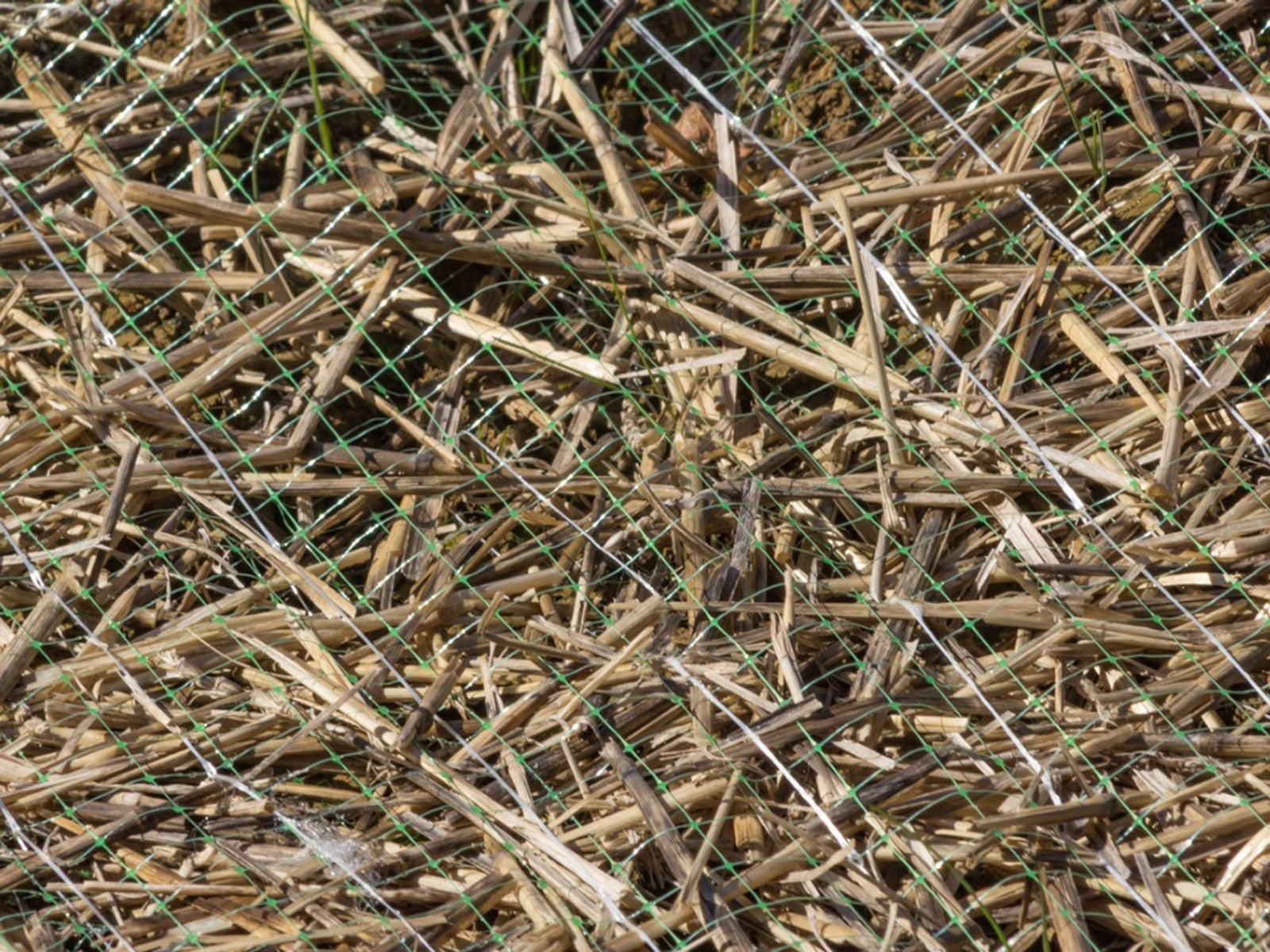Netting For Lawns - How To Use Landscape Netting


Grass and other groundcovers planted on erosion prone areas or unprotected windy sites need a little help sticking around until germination. Netting for lawns provides this defense and shelters the seed until it sprouts. What is lawn netting? There are several types of netting for landscaping, which are designed to safeguard the seed. Whether you chose jute, straw, or coconut fiber coverings, knowing how to use landscape netting helps ensure success when straight seeding a large area that might be compromised by vigorous weather.
What is Lawn Netting?
Erosion prone areas benefit from plant covers that help hold soil and preserve the landscape. Landscape netting for grass and other seeded plants safeguard the seeds as they germinate, increasing the number of plants that will grow. It is important to prepare the seed bed as the manufacturer recommends and provide adequate moisture, but all your hard work will be for naught if you don't shield the seeds and they blow away or irrigation rinses them off. There are natural fiber varieties and plastic mesh which offers more durable and longer protection.
Types of Netting for Landscaping
Jute: The most commonly used netting is jute. Jute is a natural fiber with strength and biodegradability. It is a ropy material woven in a grid-like pattern that you stake across the seed bed. It makes natural landscape netting for grass and decomposes within a season. Coir: Coir or coconut fiber is a popular choice. It is the basis for some soil amendments, pot and planter liners, and other garden uses. The fiber is sometimes bonded to plastic mesh as a longer lasting alternative. Straw: Another type of netting for lawns is straw. This common material has long been laid over compromised sites to help prevent erosion, protect plant roots, enhance moisture retention, and prevent weeds. When it is combined with other materials in a web-like structure, it allows plants to peek through as they grow but stabilizes the soil to prevent seeds and baby plants from blowing or flooding away. All netting is classed by the size of the grid opening. Type A has a 65% open area, while Type B has an opening 50% of the grid size. Type C has the smallest, opening at only 39% and is used after seedlings have emerged.
How to Use Landscape Netting
Most exposed sites will benefit from landscape netting. Once you have prepared the seedbed and sown the seeds, you simply drape the fabric or mesh over the exposed area. Start at one end and roll it out evenly, using soil staples or stakes to hold it into the soil. In some instances, you will seed after you have used the mesh to hold the prepared soil in place. To do this, shovel 4 inches (10 cm.) of soil over the mesh and rake out evenly. Then plant your seed as usual. Compostable lawn netting will disappear after a while. Most plastic mesh is left in place as a permanent protection on hills and cliff areas. Not all sites need netting for lawns but it is a useful tool in exposed areas.
Sign up for the Gardening Know How newsletter today and receive a free copy of our e-book "How to Grow Delicious Tomatoes".

Bonnie Grant is a professional landscaper with a Certification in Urban Gardening. She has been gardening and writing for 15 years. A former professional chef, she has a passion for edible landscaping.